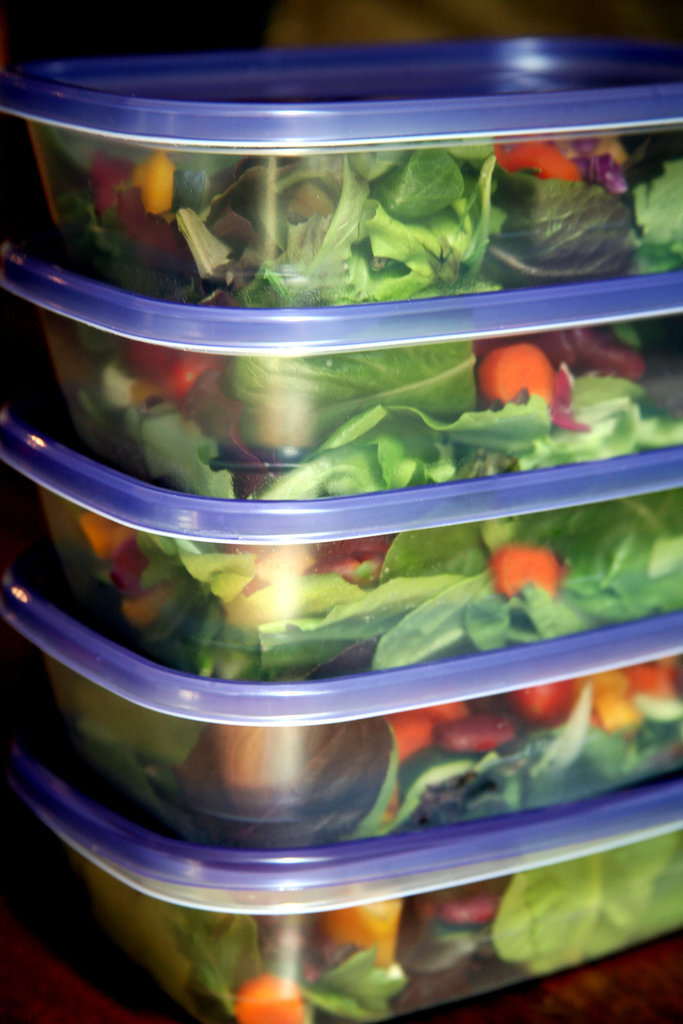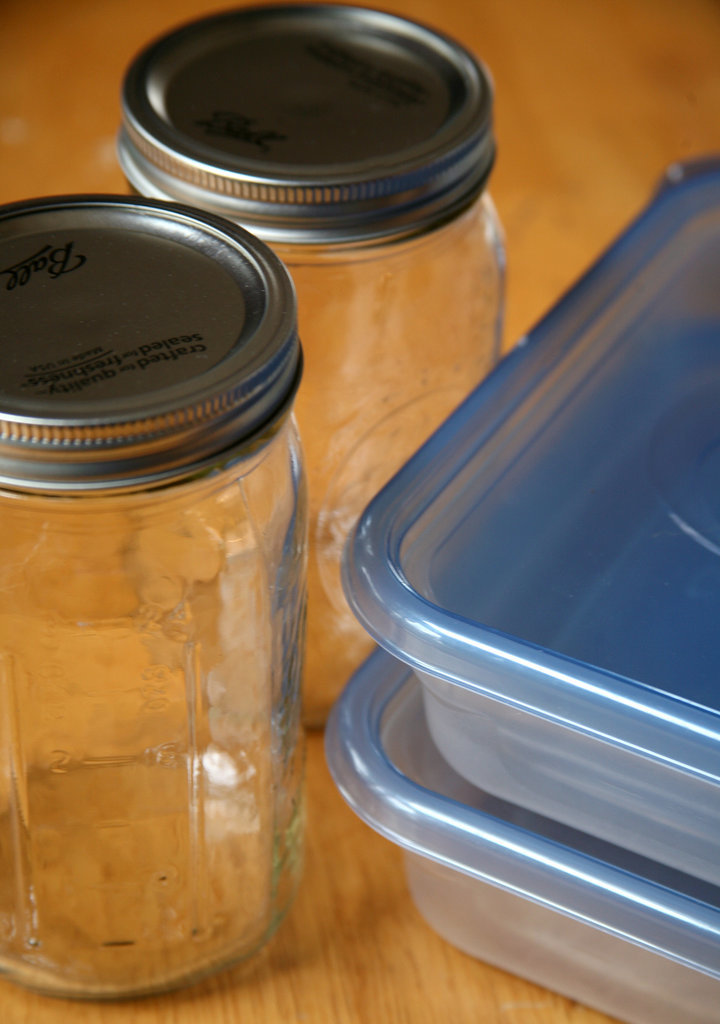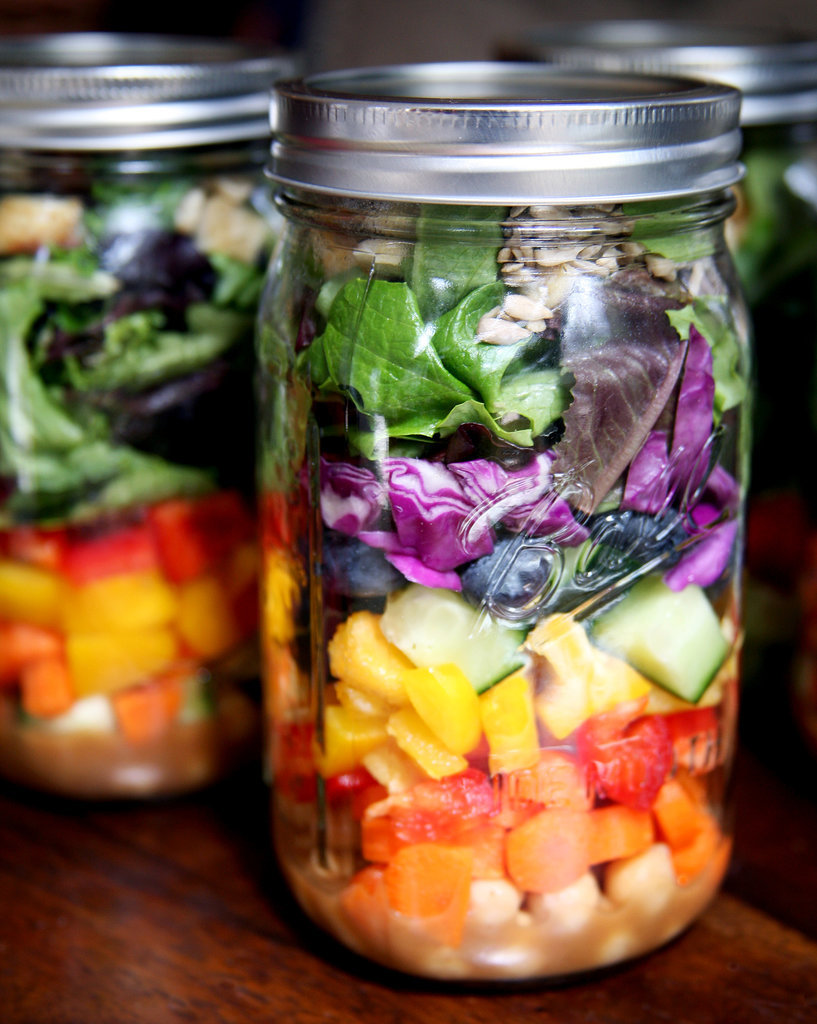This is just a general guide with lots of room for creativity. Even though you're making all five salads at one time, you can still make them all a little different with the types of toppings and dressings you use for each one. It's a great way to save time and money and ensure you're getting a dose of daily veggies for health and weight loss.
Types of Containers
Where you work and how you get there will determine which container is best for you. BPA-free plastic containers with lids are probably the most popular since they're lightweight and rugged, making them great if you're carrying a lot on your commute or if you're biking or walking to work. They also fit well in lunch boxes with ice packs, which is essential if your office doesn't offer a fridge or you are on the go and eat lunch wherever you are.
You can also use glass mason jars, which are a must if you're concerned about eating out of plastic containers. These are fragile, so they're great if you're commuting in a car, bus, or train or if you're walking to work. You just want to make sure these stay upright.
Both containers are fairly inexpensive and they're dishwasher-safe and reusable, so you can feel good about putting less waste in the landfill.
The Art of Packing: Plastic Containers
Choose ones that are flat and rectangular in shape. These not only stack well in your fridge, but they also create more space for the veggies to spread out, preventing sogginess.
- Start with the greens. To save time, pick up a package of prewashed salad greens. If you're using greens from your garden or a farmers market, just make sure they're completely dry before packing. Fill the container about three-quarters full of greens (about two to three cups).
- Add the veggies, beans, and fruit. Go for carrots, cucumbers, tomatoes (use cherry and keep them whole), peppers, broccoli, chickpeas, kidney beans, corn, peas, or even fruit like grapes or blueberries — whatever your little salad-loving heart desires. Drying off each ingredient with a paper towel will keep them crisper longer.
- Add protein. For protein sources like marinated tofu, grilled chicken, hard-boiled eggs, certain types of cheese like cubed cheddar, and cooked (and cooled) whole grains like quinoa or brown rice, add these on top of the first three salads only (Monday's, Tuesday's, and Wednesday's). Then on Wednesday night, add protein to Thursday's and Friday's containers. Do the same with avocado, nuts and seeds, or very wet fruits like sliced strawberries.
- Keep dressing separate until the moment you eat your salad. Purchase a couple dip-sized containers. Or if you have an office fridge, keep a bottle of dressing there.
The Art of Packing: Mason Jars
Go for the quart-size jars with wide-mouth lids since these are easier to fill and eat out of. Use this system only if you can keep the jars upright.
- Start with salad dressing. Since you keep the jar upright, the salad dressing will stay separated from your veggies. This is great if you don't want to pack a separate container for dressing.
- Veggies are next. Start with harder veggies like carrots, radishes, onions, and chickpeas that will taste lovely mingling with the dressing. Then go for anything else like capsicums, chopped carrots, and cherry tomatoes.
- Layer up the greens. This should take up at least half the jar. As mentioned earlier, go for packaged greens to save time, or if you're using your own, make sure they're dry.
- Protein last. Sprinkle sautéed tofu, marinated tempeh, grilled chicken, or cubed or shredded cheese on top. These will help push the lighter-weight greens down so you add even more to your jar. You can also add avocado, nuts or seeds, and dried fruit.
- Shake or pour when you're ready. At lunchtime, you can either shake up the container to distribute the dressing, or if you have the luxury, pour the entire contents into a bowl and mix it up with your fork.
Shopping List
Here's an example of what to buy for five days of salads:
- Large container of greens
- 2 cucumbers
- 2 to 3 capsicums
- 5 medium carrots
- 1 package cherry tomatoes
- 1 bag grapes
- 2 packages tofu
- 1 can chickpeas
- Sunflower seeds
- 2 avocados
- Bottle of your favourite salad dressing

Source
http://www.popsugar.com.au/fitness/How-Make-Salads-Keep-Them-Fresh-34679280




No comments:
Post a Comment